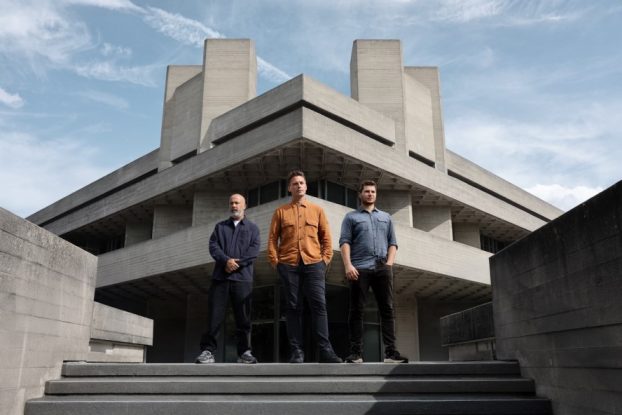Melanie Batchelor became president of Campari Canada at a time when the entire business world was unknowingly inching closer to a precipice called COVID-19.
A native of Australia, Batchelor replaced Massimo Mottura as president in January and now splits her time between Campari’s head office in Toronto, its production office and facility in Grimsby, and her home city of Austin, Texas. She has served as VP of marketing for Campari America and VP global spirits and marketing director for the Australia and Pacific region.
The global spirits company is celebrating its fifth anniversary in Canada, its tenth largest market globally, where it has become the sixth-largest alcohol distributor. With a portfolio of recognizable brands that also support simple, at-home cocktailing, including Appleton Estate, Forty Creek, Aperol, Campari and Grand Marnier, Batchelor believes the company is in a good position to emerge from the crisis unscathed – perhaps even on top. In beverage alcohol, consumers have gravitated towards “tried-and-trusted” brands, and Campari’s products align with people’s heightened interest in exploration and more bitter flavours, she says.
At the same time, Batchelor’s priorities as president include driving growth for Appleton Estate and Forty Creek, well-known brands whose performance has “been somewhat flat in the last couple of years,” as a result of needing to “make some changes to the brands to correct some of the foundational issues.”
Campari sees a “big opportunity to refresh and grow both those brands,” she says. But much of the work was planned well before the global health crisis began.
What have you set out to accomplish with Appleton Estate?
We’ve been working on a plan to sharpen the positioning and packaging for Appleton Estate [Signature Blend] for about three years, and we put a huge amount of thought into how to go out first and biggest in Canada, one of our largest markets in the world. We had [master blender] Joy [Spence] come to Toronto about four weeks ago – seems like a decade ago now. We had a launch event at one of the flagship LCBO stores, as we started to roll out the new packaging.
We saw a lot of pantry stocking happening early in the crisis. But we also saw that consumers reverted to those tried-and-trusted brands, so we saw a lot of the big brands accelerate ahead of some other brands. For us, Appleton Estate was one of those brands, so [consumers] discovered the new packaging more rapidly than we expected. We thought it would take several months to roll this new pack across all of the markets. But that’s happened very quickly. We’ve also launched a new variant, an eight-year-old blend, which will replace the old Appleton Estate Reserve. And we’re relaunching the 12- and 21-year in new packaging.
From a comms perspective, we’ve had to do a lot of very quick shifts. A lot of the activations and sampling activities were centred around the LCBO and other stores. Obviously, we can’t do any sampling at this time, because it’s absolutely critical that employees are kept safe. So we’ve had to shift a lot of our media towards more digital and reach consumers in their home. We can continue to educate consumers around the new packaging, around the new variants, and more importantly, how to enjoy our cocktails at home.
What’s changed about the brand’s packaging and positioning?
From a positioning perspective, we want to put a much bigger emphasis on the provenance of the brand and, in particular, Jamaican excellence. It’s an interesting category in that rum is made all over the world [under] many different standards. If you look at another category like bourbon, it’s only made in the U.S and there are tight regulations around what can and cannot be called a bourbon. However, for rum, it can be a myriad of things.
 We’ve been working closely with the government and other distillers to create a local geographic indicator, which is almost finalized now. A lot of rums use what’s called the Solera technique, meaning while they might have a number on the bottle, it’s not reflective of the youngest rum [in the product]. For Jamaica rum, if you have an eight-year rum, that means that the youngest drop of liquid [in the bottle] is eight years old. So we recently launched a 30-year-old, a very limited edition rum in Canada that has some 50-year-old liquid in it. But we couldn’t claim that because of the minimum aging [labelling requirements].
We’ve been working closely with the government and other distillers to create a local geographic indicator, which is almost finalized now. A lot of rums use what’s called the Solera technique, meaning while they might have a number on the bottle, it’s not reflective of the youngest rum [in the product]. For Jamaica rum, if you have an eight-year rum, that means that the youngest drop of liquid [in the bottle] is eight years old. So we recently launched a 30-year-old, a very limited edition rum in Canada that has some 50-year-old liquid in it. But we couldn’t claim that because of the minimum aging [labelling requirements].
Turning to Forty Creek. What work are you doing for that brand?
We’re in the midst of launching a big communications campaign that heavily skewed towards out-of-home and transit. The team’s been very nimble to shift a lot of that [spend] towards digital.
We’ve also got a lot of great news coming from an innovation perspective. You could say [Forty Creek] was the original craft brand in Ontario. We’re seeing a lot of new craft brands come into the market now which is great, but Forty Creek was that brand that made a difference and disrupted the Canadian whisky category, which we’ve got an opportunity to do more of. We have a fantastic master blender, Bill Ashburn, who’s been with [the company] for just over 34 years. He’s been working on some exciting projects. Innovation is going to be key in the coming year.
Outside of the campaigns for those brands, how has COVID-19 impacted your business?
The first priority was to keep everyone safe. The second was managing day-to-day. We paused social media, because we wanted to ensure that we didn’t have any content going out that was seen as tone deaf. For example, Aperol is the bright star in our portfolio in Canada and globally – off the back of the Aperol Spritz, we’ve been enjoying phenomenal growth in Canada. But the marketing [is typically] built around conviviality and sociability. Not only [do we use] a lot of experiential activity, because we need people to enjoy and learn about the Aperol Spritz and how to make it, but all the imagery is associated with people enjoying each other’s company, ignoring social distancing. So we paused everything [before coming] out with content appropriate for today.
Then we got together and thought, ‘What can we do to give back to the community?’ Bill [Ashburn] learned how to make hand sanitizer and worked closely with Health Canada to have licenses and formulations approved so we could produce hand sanitizer. We’ve not only done that for its internal use, but we’ve also donated it to the Canadian Red Cross and St. Catherine’s General Hospital in Niagara. That was the most tangible way that we could give back.
We also thought about our partners that are impacted by this and [bartenders are one] of the most hard-hit communities. [On March 27], we launched competitions with Campari and other brands [called Campari Stir Crazy], asking bartenders – because we knew a lot of them were out of work – to create content and cocktails for us. [While initially aimed at hiring 25 bartenders] we’re now paying all [137] bartenders that applied to create content, which we will then be using for our [social channels]. We’ve given back well over $30,000 to the bartender community. So it’s a win-win.
This interview is part of a series for Strategy C-Suite, a weekly email briefing on how Canada’s brand leaders are responding to market challenges and acting on new opportunities. Sign-up for the newsletter here to receive the latest stories directly to your inbox every Tuesday.
The interview has been edited for length and clarity.

























